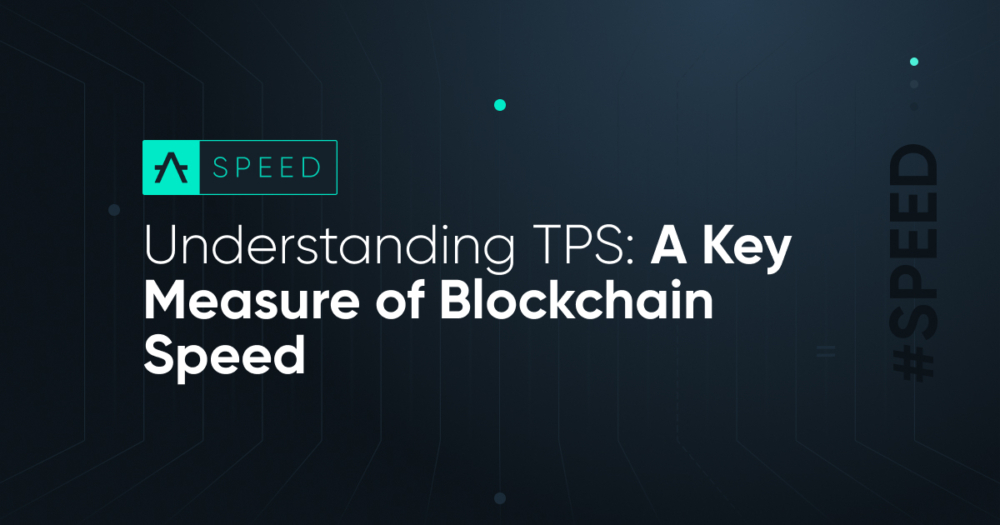Understanding TPS: A Key Measure of Blockchain Speed
Jan 22, 2024

We’ve talked about how important blockchain scalability is to all sorts of compliance and privacy solutions. However, we also need to understand what having this scalability means and what it looks like in a blockchain network’s operations.
There are many ways to measure the speed of a blockchain network. The most popular of these is Transactions per Second (TPS). This is not the only measure, however, but it is still key.
Let’s take a look at TPS first and then we’ll jump into other factors in blockchain speed that’ll help us understand how they would affect a project looking to build on the fastest blockchain, for example.
Why Do We Need Blockchain Speed in the First Place?
The first thing to understand about TPS and other speed measurements is why we need them. Scalability is not just about speed, but it is an essential factor because of its implications for user experiences (UX).
When a decentralized application (dapp) makes use of the features in the underlying L1 chain, it’ll usually depend on that chain’s transaction times and other factors related to speed in order to return a result back to the user. In the context of most blockchain networks this is rarely an instant process.
Most users, however, already expect the instant interactions they’re used to having in their web2 applications. The same goes for many other real-world use cases that require rapid responses and low latency communications. These could range from Internet of Things (IoT) solutions to on-chain risk management applications in DeFi.
This is where the problem of blockchain speed, and measuring that speed, becomes front and center for both development teams and end users.
Understanding TPS as a Measure of Blockchain Speed
This is also where TPS comes in. TPS is a way to measure transaction throughput or the number of transactions a blockchain can process within a specific timeframe. A higher TPS indicates a faster and more scalable blockchain.
Faster block generation times and transaction confirmations directly contribute to higher transaction throughput. This is essential for blockchain networks that aim to handle a large volume of transactions per second.
Even for basic applications like cryptocurrency transactions or decentralized finance (DeFi) platforms, quick transaction processing is vital for user satisfaction and widespread adoption. For more complex use cases, transaction throughput, as measured by TPS, is what determines whether an application can be built in the first place.
Other Ways of Measuring Blockchain Speed
However, TPS is not the only important measurement for blockchain speed or what makes a network the fastest blockchain. Other factors also play an important role, and in some cases the most important role. Blockchain speed can also be looked at through the lens of:
Block Confirmation Time
Block confirmation time is the average time it takes for a new block to be added to the blockchain. A shorter confirmation time implies faster transaction finality. Monitoring block confirmation times helps assess how quickly transactions are validated and added to the blockchain.
Finality
Finality is the assurance that a transaction is irreversible and permanently recorded on the blockchain. Quicker finality indicates a faster and more secure blockchain. Understanding how long it takes for transactions to achieve finality provides insights into the speed of the consensus mechanism.
Latency
Latency measures the time it takes for a transaction to be propagated across the network and confirmed. Lower latency indicates faster transaction propagation and network responsiveness. Latency is crucial for applications where real-time interactions are essential, such as financial transactions.
A Wholistic Look at Blockchain Speed
By considering these metrics, both developers, users can gain a comprehensive understanding of a blockchain network’s speed and efficiency. Blockchain speed is not measured by a single number. It’s essential to evaluate these factors in combination, as they collectively contribute to the overall performance of the blockchain.
Ultimately, assessing blockchain speed is a matter of its performance in real-world use cases. Measuring how a blockchain network performs in applications for anything ranging from supply chain management to decentralized finance will be the definitive measurement and provides practical insights into its speed and applicability in specific scenarios.
Dive into this previous post on the Aleph Zero blog for a more in-depth look at TPS, Finality, and Latency. You can also join the Aleph Zero community and tune in to the Aleph Zero podcast to go in-depth and learn more about blockchain speed and scalability.


